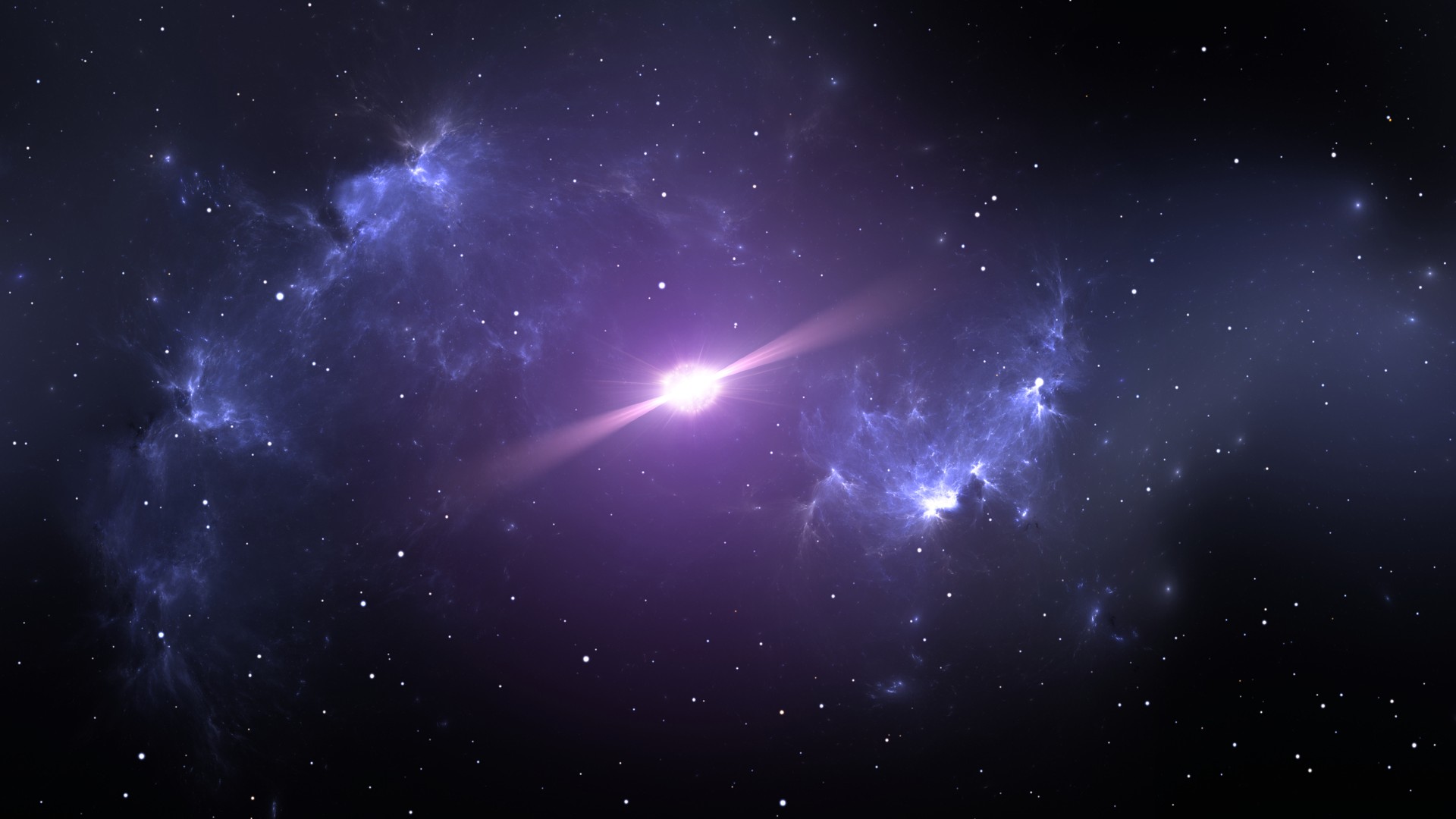Neutron stars could be the ultimate dark matter detectors

The density of a neutron star is key to its use as a dark matter detector.

Astronomers continue to struggle in their hunt for dark matter, the elusive and mysterious form of matter that dominates the mass of the universe. But one astronomer proposes that, instead of building gigantic, expensive experiments on Earth, we should try another method of searching for dark matter: Looking to the stars.
Multiple independent lines of evidence suggest that dark matter exists. Something is keeping stars contained within galaxies despite their enormous speeds. Something is keeping galaxies contained within clusters despite their excess motion. Something is bending the path of light around massive objects. Something started building the large-scale structure of the universe well before normal matter had the chance.
All that "something" is currently sitting under the label of dark matter, and the vast majority of scientists believe that dark matter is some new kind of particle that's currently not included in the Standard Model of particle physics and evades direct detection because it barely, if ever, interacts with light or normal matter.
Related: We still don't know what dark matter is, but here's what it's not
In this picture, dark matter particles stream through every bit of the galaxy, including in the room you're sitting in right now. Because these particles are invisible, however, they have remained undetected. Scientists have spent the past few decades building enormous laboratories on Earth to attempt to catch a fleeting interaction with a dark matter particle, to no avail.
But nature has dark matter laboratories of its own, and they are much more powerful than ours, Thong Nguyen, an astronomer based at the Academia Sinica in Taiwan, noted in a paper published to the preprint database arXiv.
In the standard dark matter picture, dark matter begins collecting together in the early universe well before regular matter does. Galaxies, which represent less than 20% of all the mass in the universe, are simply pockets of lit-up matter that have fallen into these dark matter gravitational wells. So there should be a lot more dark matter sitting in the core of every galaxy, with up to thousands of times higher density than the dark matter out in the solar neighborhood.
Breaking space news, the latest updates on rocket launches, skywatching events and more!
So, if we want to go hunting for dark matter, we're going to have a much tougher time if we stick to Earth-based experiments, because the local dark matter density is so low. On the other hand, it's not like we can send an experiment flying 25,000 light-years away into the galactic center. So how can we directly search for dark matter there?
The answer, according to Nguyen, is neutron stars, the cores of massive stars left behind after they go supernova. After black holes, neutron stars are the densest objects in the universe; a typical neutron star crams two to three suns' worth of material into a volume less than that of Manhattan. Their densities are so high that they are essentially mile-wide atomic nuclei. If they were any denser, they would simply collapse into black holes.
The density of a neutron star is key to its use as a dark matter detector. Although interactions between dark matter and regular matter must be rare (otherwise, we would have noticed dark matter by now), they don't have to be completely absent. If there is any small, rare interaction between the two kinds of matter, it is much more likely to happen within a neutron star, simply because there's a whole lot of stuff to interact with crammed into one.
There are neutron stars all over the galaxy, but they are especially common in the core, since it's also a beehive of stellar activity. In the galaxy's core, there is more material to build stars and more interactions, which, when combined, lead to higher rates of star formation. This leaves behind lots of dead remnants, like neutron stars. Indeed, there may be as many as a thousand neutron stars within a few light-years of the center of the galaxy.
If dark matter interacts with normal matter, then when it encounters a neutron star, it will have so many interactions that it loses energy. Over the course of millions of years, a substantial amount of dark matter can pile up inside neutron stars. The high density of dark matter is susceptible to annihilation, in which two dark matter particles interact and destroy each other, decaying into other particles in the process. These other particles then go on to produce many other products, like neutrinos, that are capable of escaping the neutron star.
On Earth, we have a multitude of neutrino telescopes, like the IceCube Neutrino Observatory at the South Pole in Antarctica. Nguyen used publicly available data from these telescopes to search for an excess neutrino signal coming from the galactic center. Although he didn't find any conclusive evidence for the existence of dark matter, he was able to put limits on the ability of dark matter to interact with normal matter through this process.
While we still lack a full understanding of dark matter, ideas like this, especially when it comes to using nature as a test laboratory, will help narrow down the search and hopefully reveal the identity of this elusive particle.

Paul M. Sutter is a cosmologist at Johns Hopkins University, host of Ask a Spaceman, and author of How to Die in Space.
